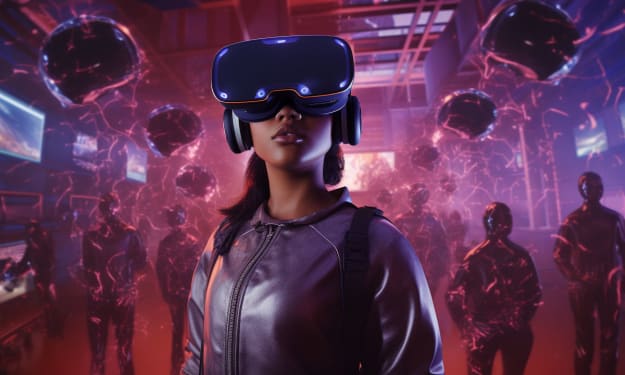How Are AR and VR Reshaping the Future in Healthcare?
AR and VR App Development

Augmented and Virtual Reality continue to thrive in several industries, including healthcare. Healthcare specialists are discovering several ways to improve the quality of life for patients and physicians alike using these technologies. The possibilities are seemingly endless if we consider the applications of these technologies. It's no wonder the global AR/VR market is estimated to grow by nearly USD 10 billion by 2027.
Augmented and Virtual reality have immense potential in this sector. The two enable healthcare institutions to improve treatments, reduce hospital stays, and enhance the overall patient experience. They can offer alternatives to painful or tedious treatment procedures for several disorders.
Applications of VR and AR App Development
There are several use cases of AR and VR, such as medical training and providing real-time assistance during surgeries, among the following:
- Surgeon Training
VR is helping reshape the approach to learning medical procedures in healthcare institutions. Traditionally, a limited number of students could be personally present in an operating room where a procedure would be performed.
Surgeons now use 360-degree cameras that live-stream their operations to their students' VR goggles. A virtual OR environment created by an experienced VR or AR app development company can help many students learn about procedural technicalities at the same time.
- Pain Management
Patients find minor procedures such as mass removal or stitches less painful when they view calm videos using VR goggles to distract them. Numerous reduced pain and soreness reports have led to clinical trials considering VR devices for chronic pain management therapies.
Doctors are even conducting studies to find out how AR and VR stack up against opioids and pharmaceuticals. As these technologies improve, they will provide useful effects beyond merely "distracting" patients from their pain. An effective alternative to manage chronic pain would reduce the over-prescription of opioids and the associated addiction and deaths.
- Spreading Awareness
Serious illnesses, such as Parkinson's, create many challenges in patients' lives. Healthcare professionals can collaborate with content creators to help people understand the daily struggles of patients with such disorders.
VR simulations of different environments can help people grow more aware of how patients face different situations in the real world. The insights these virtual experiences bring will help people provide more effective solutions for assistance and relief.
- Rehabilitation for Neurological Conditions
Patients recovering from a stroke or severe brain injury require several rehabilitation procedures to regain their ability to walk or move. They need these therapies as quickly as possible for faster recovery.
AR and VR-based sessions can help patients practice repetitive movements and picking up objects with controllers. These can make training their nervous system easier and quicker than conventional methods.
Examples of AR And VR Applications in Healthcare
Pediatric specialists use VR and AR technologies to reduce patient anxiety. They are also working on virtual reality experiences and interactive projector-based games. The benefits far outweigh the mobile app development cost, especially in this case.
A hospital in the US has made VR available for every patient to engage and distract them during certain hospital procedures. Animated characters pop up in the VR app to interact with patients.
UK-based hospitals are slowly introducing virtual reality apps that let patients awaiting surgery explore the hospital areas from their homes. This helps prepare them for their visit as they become familiar with the hospital's waiting area and operation theater.
Disorders such as autism and low vision can also benefit from innovative VR-based applications that will offer more effective treatments adjusted according to the patient.
Reshaping Healthcare
AR and VR are already proving very useful for at-home rehabilitation, radically changing patient experiences. However, the biggest advantage of AR and VR is their ability to support patients during the toughest times of their lives.
These immersive technologies are set to gain widespread recognition and adoption due to their potential. It will decrease the average cost of developing AR applications as well.





Comments
There are no comments for this story
Be the first to respond and start the conversation.